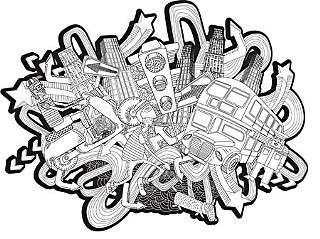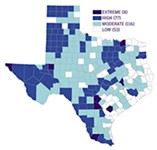Getting a Move on Mobility
A peek at Austin's new Strategic Mobility Plan
By Katherine Gregor, Fri., May 8, 2009
Note to self: "A noncoordinated, single-mode approach to transportation issues doesn't work." That's among the salient points made to City Council last week by Rob Spillar, transportation director for the city of Austin, in introducing the department's overarching Strategic Mobility Program. Thanks to a reorganization by City Manager Marc Ott, the new department now houses some 160 city positions; its challenge is to address Austin's traffic and mobility woes. The announcement of a concrete program is timely, given the need to inform the city's upcoming comprehensive plan and the region's emerging 2035 transportation and land-use plan from the Capital Area Metropolitan Planning Organization. "I thought it was excellent," Council Member Brewster McCracken commented after the presentation. "They've identified a funding source, and they have a credible strategy to move forward."
Spillar and his team are determined to get tough on the big, complex mobility issues that everyone complains about, while being "innovative," "integrated," and "sustainable." In advocating for the city's needs, the department has a mission to lead regional mobility discussions and better coordinated planning for the long term.
The mobility program has four components: circulation studies (part of the Downtown Austin Plan), a gap analysis (to identify the system's most crucial missing links), a sustainability plan, and an urban rail program. Circulation studies help identify the sources of Austin's mobility problems. (Surprisingly, the volume of traffic in and out of Downtown measures at the same levels today as it did in 1992 – at capacity then, at capacity now. The congestion just lasts longer.) Through the gap analysis, the department aims to identify specific multimodal projects it can finish by 2014. (One recommended at council: completing the highway flyover interchange at MoPac and Ben White.) Sustainability planning focuses on how the city can advance the regional big issues, such as land use, and on providing ways to get around besides roads. The urban rail program includes preliminary engineering, environmental studies, and analysis of various alternatives.
To pay for all this, Spillar identified some Texas Department of Transportation rebates and other state moneys that could be tapped; the department also is refining a rail-funding proposal. But to what extent state funds will really come through remains unknown. "It depends on which options come out of the Legislature," observed Council Member Lee Leffingwell. "We'll know a lot more after the end of the session, but we need to be doing it."
McCracken also endorsed steady city progress now on engineering and planning work for rail transit, pointing out that it underlies the detailed cost data needed to pursue federal funding, as well as voter approval. "Capital Metro didn't pursue federal moneys in part because they hadn't done the detailed engineering work," said McCracken. "Let's spend the money now to get that work done."
Got something to say on the subject? Send a letter to the editor.









